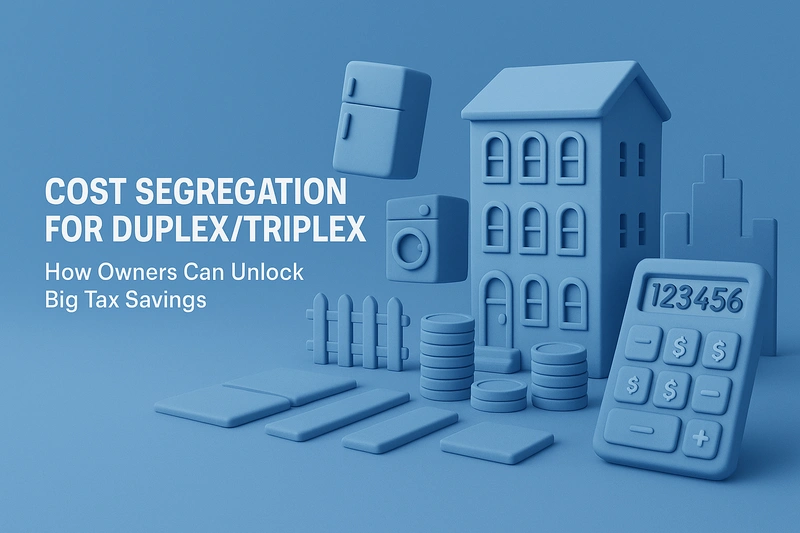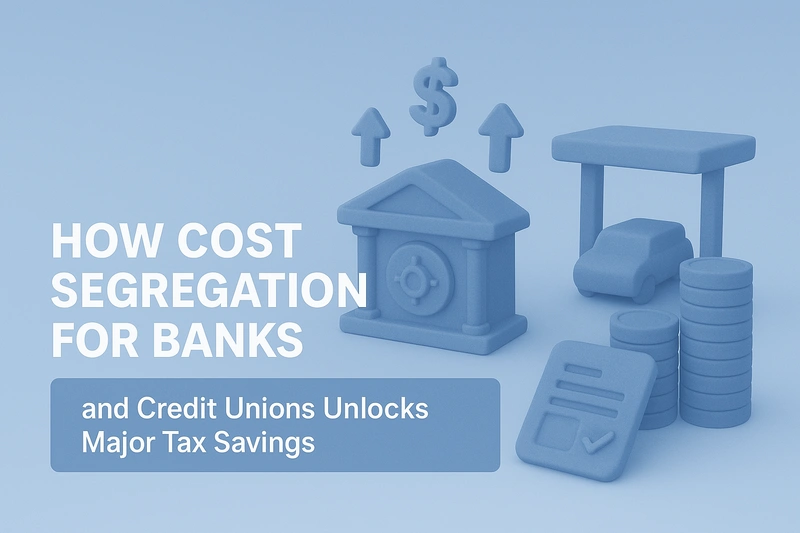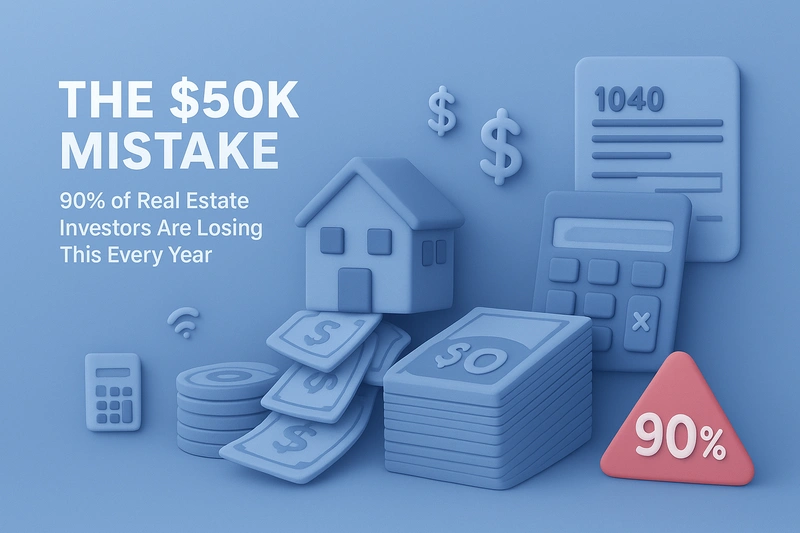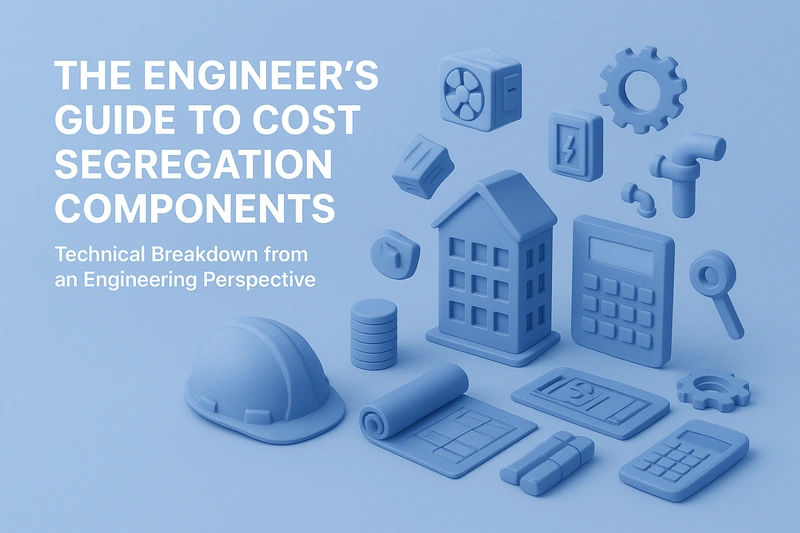A few years back, a client of mine was weighing whether to hold on to a small triplex she’d recently renovated. On paper, the property looked like a solid long-term play, but her concern was cash flow in the early years.
She had assumed that cost segregation was only worth it for large apartment complexes or commercial buildings. When we walked through the numbers, though, the story changed. By breaking out and accelerating depreciation on the property’s improvements, everything from appliances to parking areas, we unlocked tens of thousands in deductions during the first five years.
That early tax relief gave her the breathing room to reinvest in another property sooner than planned.
That experience stuck with me because it highlights a misconception I see all the time: duplexes and triplexes may be “small” multifamily assets, but the tax benefits of cost segregation can be amazing.
Let’s break down exactly how cost segregation for duplex/triplex owners works.
What Is Cost Segregation and Why Does It Matter
Cost segregation is a strategic tax planning tool that allows real estate owners to accelerate depreciation on certain components of a property. Instead of depreciating the entire property over 27.5 years (for residential real estate), you reclassify parts of it into shorter depreciation categories (5, 7, or 15 years).
By front-loading depreciation deductions, investors can drastically reduce their taxable income in the early years of ownership, improving cash flow when it’s often needed most.
Why Cost Segregation Is So Important for Duplex/Triplex Owners
While cost segregation is common practice for larger multifamily properties, many small property owners don’t realize that the same tax strategy applies equally to duplexes and triplexes. The IRS doesn’t base depreciation rules on property size; it’s based on the nature of the components inside the property.
Accelerated Deductions
Traditional depreciation spreads the cost of a residential building over 27.5 years. With cost segregation, many components, like carpeting, cabinets, appliances, lighting, and exterior improvements, can be depreciated over 5, 7, or 15 years instead.
Increased Cash Flow
By front-loading deductions, cost segregation can reduce your taxable income during the early years of ownership, leading to significant tax savings. The resulting cash flow can be reinvested into the property, used to acquire additional units, or directed toward debt reduction, all without selling the asset.
Enhanced Value Through Bonus Depreciation
Recent legislative changes reinstated 100% bonus depreciation for qualifying property placed in service after January 19, 2025. This means many of the short-lived assets identified in a cost segregation study can now be deducted entirely in year one. For duplex and triplex owners, this makes cost segregation even more valuable, turning what was already a powerful tax tool into an immediate, upfront savings opportunity.
What Qualifies in a Cost Segregation Study?
A key part of any cost segregation strategy is identifying which components of the property can be depreciated faster. For duplexes and triplexes, these typically include:
- Personal property: Appliances, carpets, ceiling fans, cabinetry, and interior lighting
- Land improvements: Fencing, driveways, patios, landscaping, and exterior lighting
- Non-structural building components: Removable partitions, low-voltage systems, and finish-level upgrades
Each of these categories can be placed into a shorter recovery period (5, 7, or 15 years), which is where the acceleration happens. The more detailed the documentation and breakdown, the better the results.
When Cost Segregation Makes Sense and When It Doesn’t
Cost segregation isn’t automatically worth it for every duplex or triplex. The math needs to work. Some situations where it makes more or less sense:
Ideal Scenarios
- You’ve recently purchased or heavily renovated the property
- Your basis (cost excluding land) is at least $250,000
- You plan to hold the property for several years
- You’re in a high tax bracket and can fully use the deductions
Situations Where It Might Not Pay Off
- The property is older, with little recent capital improvement
- You plan to sell within 1-2 years
- Your income is too low to benefit from large deductions
- You already expense most items via Section 179 (for eligible businesses)
In short, cost segregation works best when the upfront depreciation can offset real income and when you’re holding the asset long enough to benefit from the front-loaded savings.
What Cost Segregation for Duplex/Triplex Properties Looks Like in Practice
Let’s say you purchase a duplex for $500,000. After backing out $100,000 for land, your depreciable basis is $400,000.
A cost segregation study might reclassify 25% of that basis, about $100,000, into shorter-lived assets. If the property is placed in service after January 19, 2025, current bonus depreciation rules allow you to deduct that full amount in the first year.
That $100,000 typically breaks down like this:
- $65,000 in personal property (appliances, flooring, window coverings, lighting, cabinetry)
- $35,000 in land improvements (driveways, fencing, landscaping, exterior lighting)
Here’s what that means in real terms:
- Instead of waiting 27.5 years to deduct those amounts, you get the full write-off immediately.
- You could move from a tax liability to a passive loss in a single year.
- That loss might offset income from other rental properties or carry forward to future returns.
- Many investors roll the savings into a second property, effectively accelerating portfolio growth without new capital.
This isn’t theoretical. These numbers reflect real outcomes seen in cost segregation studies on duplexes and triplexes, especially when handled by a firm that knows how to extract value from small multifamily assets.
Final Thoughts
Cost segregation isn’t a checkbox; it’s an engineering-driven tax strategy that only delivers when executed with precision. For duplex and triplex owners, where margins are tighter and every deduction counts, accuracy in how assets are identified, classified, and documented is non-negotiable.
Not all providers understand how to approach small multifamily properties with the same rigor as larger portfolios. That’s why the choice of firm matters. Working with a group that specializes in detailed, IRS-defensible studies, like R.E. Cost Seg, can be the difference between unlocking meaningful upfront value and leaving thousands on the table.
The tax code makes the opportunity available. The execution determines whether you capture it.






